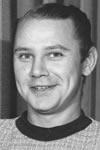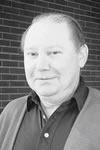On December 11, 2009 Glen Stinson of Edmonton died peacefully at the age of 69 years. Glen is survived by his wife of 28 years, Naomi, children: Roberta (Bill), Maureen (Murray) and Craig, step-children: Steve (Violeta), Karen (Ken) and Ian, eight grandchildren: Zachary, Tylyn, Jacob, Sean, Adam, Hannah, Jeremy and Janelle and two sisters; Betty (John) and Linda (Peter) as well as one niece Katelin. He was predeceased by his first wife Mary in 1977.
A Memorial Service will be held at St. John the Evangelist Anglican Church, 11111- 57 Avenue, Edmonton, AB, on Thursday, December 17, 2009 at 11:00 a.m. In lieu of flowers, donations may be made directly to the Mazankowski Heart Institute via the University Hospital Foundation, 1H1.91 Walter Mackenzie Health Sciences Centre, 8440 112 Street, Edmonton, AB, T6G 2B7. The family wishes to thank the paramedics, firemen and the staff at the University of Alberta Hospital. Condolences: www.serenity.ca Serenity Funeral Service, South Edmonton, (780) 450-0101.
Glen Stinson was instrumental to the development of nuclear physics in Canada through his work at the University of Alberta and as a founding research scientist at TRIUMF.
Glen Stinson began his association with TRIUMF in 1966. Glen started at the Nuclear Research Centre (now the Centre for Particle Physics) at the U of A in 1966 as a postdoctoral fellow. Within two years he was concentrating his research efforts on the design of the newly proposed TRIUMF laboratory in Vancouver. The main responsibility of the NRC group was the design and development of the proton area with two beam lines for nuclear physics experiments. The group would eventually conduct a series of experiments using proton spectrometers in the primary proton beam.
Glen was instrumental in the design of the proton area and its beam lines. He became an expert in magnet and beam line design. He continued to work in this specialized area throughout his career, being one of a handful in Canada with such knowledge. Glen went on to develop future beam lines at TRIUMF, including the recently constructed Isotope Separation and Accelerator Centre (ISAC) facility and ISAC-II.
Glen remained active in the area of beam line design even beyond retirement. He was highly valued at TRIUMF, where he was a beam dynamics scientist since 1968. He acted as deputy division head for its cyclotron division before retiring from the U of A. He had emeritus status at TRIUMF and provided valuable input to its beam optics program. Most recently, he worked as a beam dynamics consultant for a TRIUMF spin-off company, AAPS.
Glen was born on 27 December 1939 in Sarnia, Ontario. He graduated from the University of Toronto with an Engineering Physics degree (1961) and went on to complete graduate degrees in physics from Waterloo (MSc, 1962) and McMaster (PhD, 1966). Glen retired from the U of A as a Senior Research Scientist in 2007. He passed away on 11 December 2009 in Edmonton, Alberta. Known for working closely with the electronics technicians in the Department of Physics, Glen will be missed in the electronics shop coffee room as well as at particle physics labs in Edmonton and Vancouver.


-- Prepared from material at the University of Alberta's Centre for Particle Physics website.
